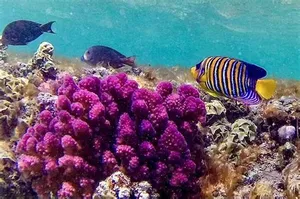It’s coming. Winds are weakening along the equatorial Pacific Ocean. Heat is building beneath the ocean surface. By July, most forecast models agree that the climate system’s biggest player – El Niño – will return for the first time in nearly four years.
During El Niño, a swath of ocean stretching 6,000 miles (about 10,000 kilometres) westward off the coast of Ecuador warms for months on end, typically by 2 to 4 degrees Fahrenheit (about 1 to 2 degrees Celsius).
A few degrees may not seem like much, but in that part of the world, it’s more than enough to completely reorganise wind, rainfall and temperature patterns all over the planet.
I’m a climate scientist who studies the oceans. After three years of La Niña, it’s time to start preparing for what El Niño may have in store.
How El Nino affects the planet
No two El Niño events are exactly alike, though we’ve seen enough of them that forecasters have a pretty good idea of what’s likely to happen.People tend to focus on El Niño’s impact on land, justifiably.It can ramp up storms in some areas, like the southern US, while tending to tamp down Atlantic hurricane activity. El Niño can also wreak havoc on the many marine ecosystems that support the world’s fishing industries, including coral reefs and seagrass meadows. Specifically, El Niño tends to trigger intense and widespread periods of extreme ocean warming known as marine heat waves. Global ocean temperatures are already at record highs.
problems with marine heat waves
A marine heat wave is just that: a “wave” of extreme heat in the ocean, not dissimilar to an atmospheric heat wave on land. At their largest, marine heat waves like the Northeast Pacific Warm Blob of 2013-2014 can grow to gargantuan proportions, with regions three times the size of Texas experiencing ocean temperatures 4 to 6F above average for months or even years. Warm water might not seem like a big deal, especially to surfers hoping to leave their wetsuits at home.Other impacts include bleached corals, widespread harmful algal blooms, decimated sea weeds.
Where El Nino fits in
In the climate system, El Niño is king. When it dons its fiery crown, the entire planet takes notice, and the oceans are no exception. But the likelihood of increased marine heat wave activity during El Niño depends on where you are. Along the US West Coast during El Niño, surface winds that normally blow from the north tend to subside. This weakens evaporation and slows upwelling of colder, deeper water.























